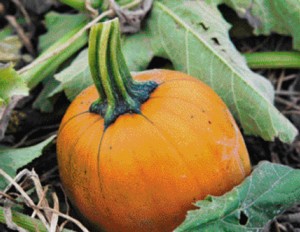Handy hints for growing crops in your backyard
By Donna Macpherson
For the organic vegie gardener, one of the greatest challenges is the control of pests and diseases. As in so many things in life, prevention is usually easier than finding a cure. The principles of simple crop rotation can be a valuable tool in the prevention of many pests and diseases in your garden. In a nutshell, crop rotation works because different groups, or families, of vegetables have different soil requirements. Certain pests and diseases tend to breed in set conditions, so by moving the different groups of vegetables from bed to bed the pests and diseases don’t have time to thrive.
To establish a crop rotation system for your vegetable garden, you need at least four different garden beds. Six is better, but that can be a little difficult in the average suburban block. Now, don’t panic at the thought of having four or six long, straight or square vegetable plots dominating your backyard. You could mix it up and have one bed along a back fence, another near the back door and one that trails along beside a winding path.
Don’t think you are restricted to formal boxed or, for that matter, identical beds. The only important thing is that you stick to one vegetable family per area and that you rotate what goes in each bed over a four- or six-year cycle, depending on how many areas you have created. How does it work? Well, in the first year you would plant all your corn and cucurbits in bed A; root crops and alliums in bed B; legumes and brassicas in bed C; and your solinaceae family in bed D. Short-term crops such as lettuce can be fitted into any beds as they won’t really be in the beds long enough to affect the soil. The next year, the corn and cucurbits move into bed B and the root crops and alliums move to bed C, the legumes and brassicas to bed D and the solinaceae family to bed A.
Keep moving them in this way until year four, when they have returned to their original beds and it all starts again. As the soil requirements of each group differ, you will be adding lime or manure or whatever to meet the needs of that group of vegetables, which will alter and refresh the soil, giving short shrift to any pests or diseases that were beginning to thrive there. That gives each bed a three-year or fiveyear (in the case of a six-bed system) rest from the pests and diseases that affect a particular group of vegetables.
The vegetable groups
For this system to work, you need to know the various vegetable groups
Group 1: corn & cucurbits Corn, pumpkin, cucumber, zucchini, squash, melons
Group 2: root crops & alliums Carrot, beetroot, potato, swede, turnip, parsnip, onion, leek, shallot, chives, garlic
Group 3: legumes & brassicas Peas, beans, cabbage, cauliflower, Brussels sprouts, broccoli, pak choi, bok choi, kale
Group 4: solinaceae Tomato, capsicum, chilli, eggplant







